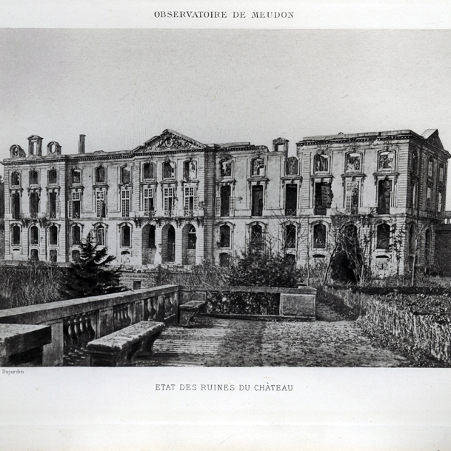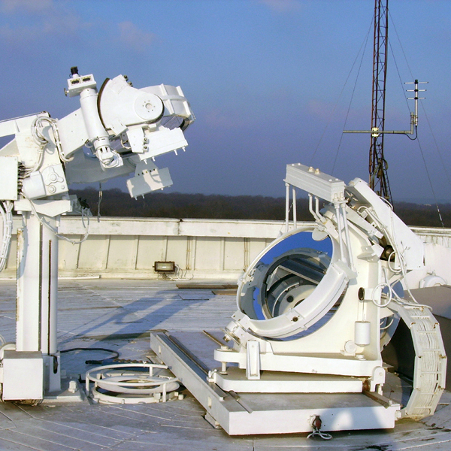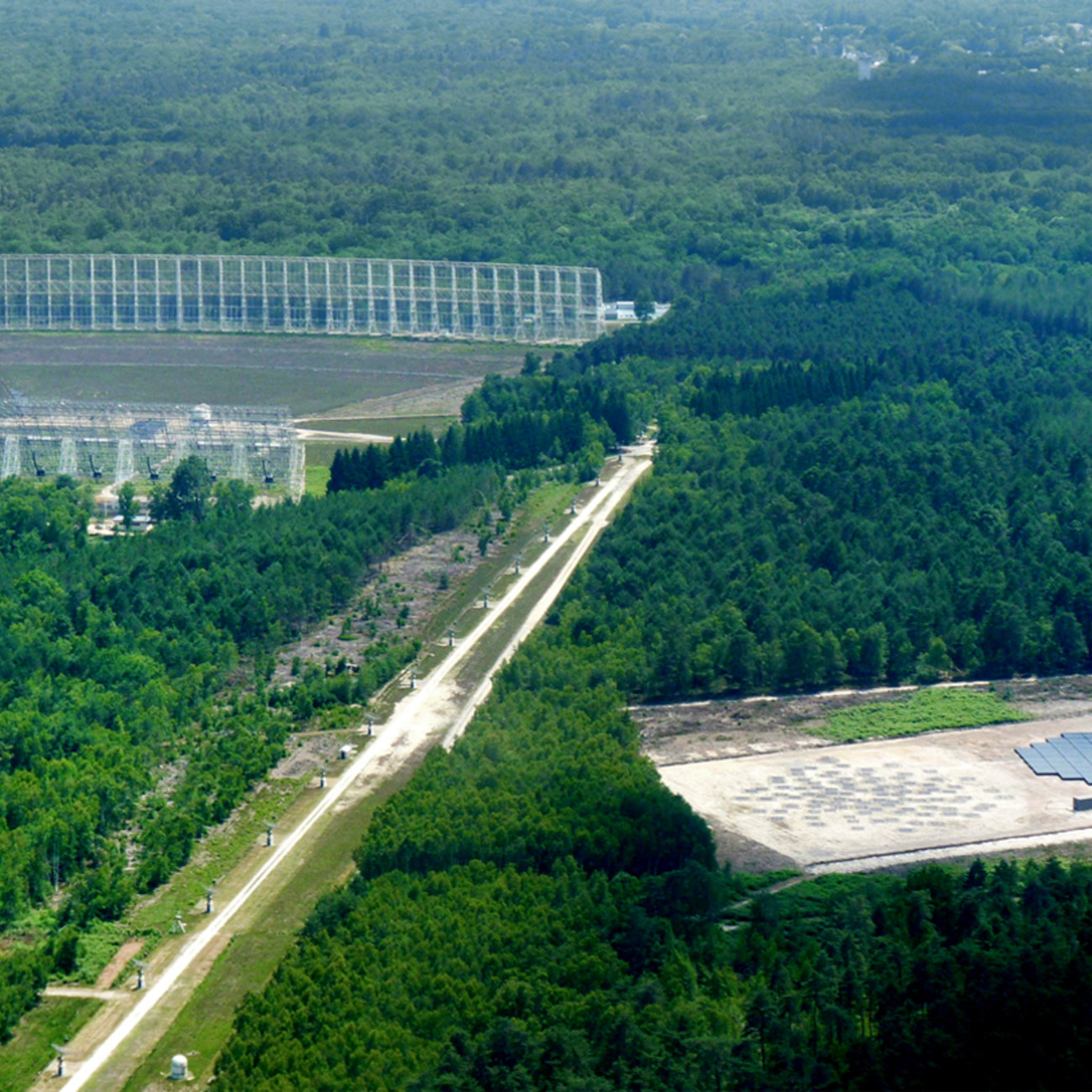Founded in 1876 at the initiative of Jules Janssen, this observatory was entirely dedicated to astrophysics. It was progressively equipped with impressive and innovative instruments. In Meudon, the Sun has been observed daily for over a hundred years; instruments placed on artificial satellites or space probes are designed and built, as well as equipment for large telescopes on the ground; data are analyzed and theories elaborated…

The Bel-Air Pool
The gardens of the Meudon palace were organized in 1655. Le Nôtre, the landscape architect of the palace of Versailles, introduced pools and an entire hydraulic network to furnish a system of fountains. This was the apogee of formal gardens. Having become a royal domain during the reign of Louis XIV, the Court could walk and hunt there. After the death of the Sun King, the site was neglected, and then divided up. The Bel-Air Pool, the paths, the splendid trees and a somewhat enigmatic statue of a gladiator are all that remains of this magnificent garden.

The two palaces
Nothing is left of the first Meudon palace. In 1520, the lavish cardinal of the Lorraine, an amateur of the Italian style, added a lodge hanging over a sumptuously decorated grotto. The public of the time was enchanted by this summer palace, designed by Le Primatice. To satisfy an increasingly numerous court, the grotto was replaced in 1706 by the Château Neuf, designed by Hardouin-Mansard. Following a fire (caused by artillery experiments!), the Château Vieux was completely dismantled in 1806, thereby giving a clear view of the main terrace.

The dome of the château
The astronomer Jules Janssen wanted to have an astronomical refractor as good as the largest instruments elsewhere, within an impressive 20 m diameter dome. This 16 m long equatorial refractor is in fact a double instrument: two refractors share a common tube, one is for visual observations while the other is for photography. The instrument, the largest refractor in Europe, was inaugurated in 1896. The dome was completely refurbished after the great storm in 1999.

The 1 m telescope
The 1 m telescope (the diameter of the mirror) was designed for the photography of low-brightness objects: nebulae, star clusters, comets. The photographic plate was mounted in front of the tube while a small prism sent a part of the image towards an eyepiece in order to be able to guide the telescope while the photograph was being taken. The first light for this telescope was in 1891. It was modified and brought up to date in 1960 to allow the polarimetric studies of Audouin Dollfus. It is now used for the hands-on training of students.

The spectro-heliograph
Based on ideas originally presented by Janssen, Henry Deslandres developed solar spectroscopy. In 1892, he constructed an instrument which was able to photograph the whole chromosphere, in the light of specific spectral lines. He had thus invented spectro-heliography. This instrument, improved and brought up to date, continues to enrich the solar image data bank, a work which is essential for the analysis of solar activity.

The large siderostat
A siderostat, an ingenious instrument invented by Léon Foucault, is a flat mirror on a mechanical mounting so that the mirror sends the light of a celestial object towards a fixed instrument, for example, a spectrograph.. The Observatory’s siderostat was installed in 1910. After having served for many years for the photography of solar magnetic fields and the motions of matter on the solar surface, it is now used for the development of new instruments.

The solar tower
Like many solar instruments, this one is also mounted above the most turbulent layers of our atmosphere. This 35-m-high building houses a vertical coudé telescope. At the top of the tower, a coelostat (an arrangement of two large flat mirrors) sends the light of the Sun to a 14-m-long spectrograph. For many years, this was the benchmark instrument for the measurement of the motions of solar chromospheric structures.

The equatorial table
The equatorial table is in fact a robust equatorial mounting to which can be attached various large instruments. Under an elegant dome, all kinds of refractors and reflectors took their place since 1934, essentially for stellar photometry and spectroscopy. Today, the equatorial table is used for teaching and training.

The Cherenkov telescope
In 2015, the Gamma-ray Cherenkov Telescope (GCT) registered its first Cherenkov light, which is emitted by the atmospheric showers induced by the passage through our atmosphere of cosmic rays and gamma rays. This unusual telescope is the prototype for the up-coming international Cherenkov Telescope Array (CTA) for very high-energy astronomy.

The instrument pole
The Observatory designs and manufactures many of the instruments used in space missions, as well as for ground-based observations. This work is done in collaboration with the large space agencies in the world (CNES, ESA, NASA), as well as with the important European and international observatories, such as ESO in Chile. During 2017, for example, one of the elements of the Supercam will be on the next Mars rover which NASA will send to the red planet.

The “Grands communs”
Towards the end of the 19th century, Jules Janssen installed in the outbuildings of the Meudon château a laboratory for the spectral analysis of gases. The purpose of this work was to be able to identify gases in stellar spectra. Today, the building houses one of the most powerful spectrographs in the world.


